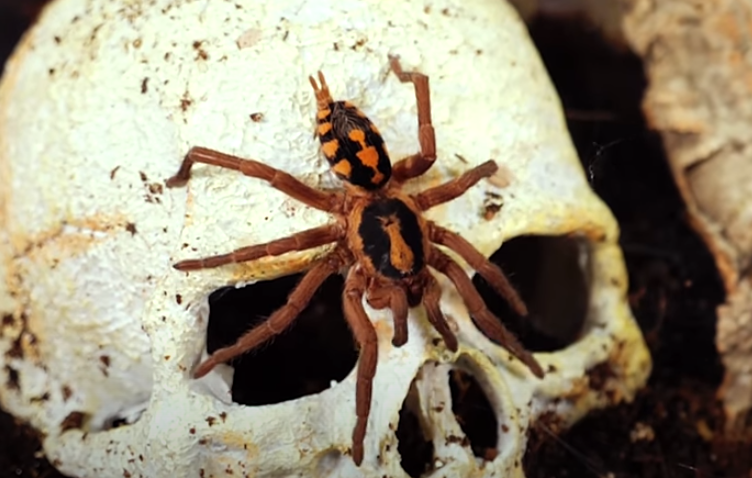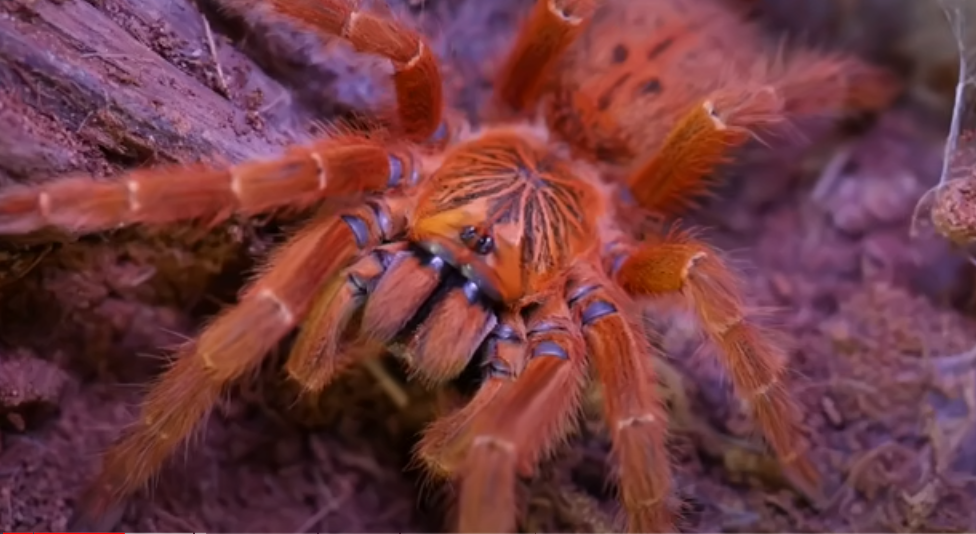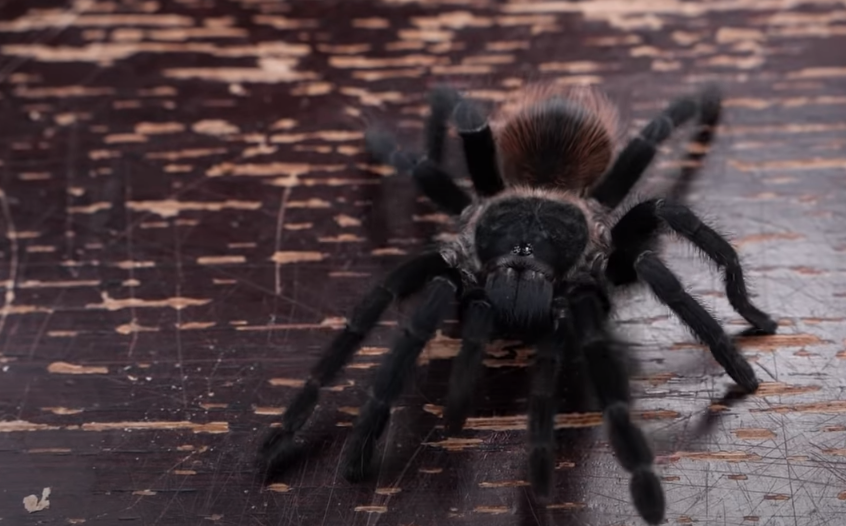A jumping spider is one of many ideal pet spiders to have. Like any other pet, you need to ensure it has proper living conditions. A proper spider habitat will ensure the health and comfort of your spider. In this article, we will be providing you with a jumping spider habitat guide to help guarantee the proper care of your jumping spider.
Table of Contents
Toggle
General Habitat of a Jumping Spider
Jumping spiders thrive worldwide in various habitats, from tropical rainforests to arid deserts and high-altitude mountains. They adapt easily and can be found in sunny spots in fields, forest edges, gardens, and even human homes. Thus, they’re widespread across continents, notably in tropical, subtropical, and temperate regions, including urban areas.
These spiders have specialized adaptations for survival, like conserving water in arid climates and entering diapause during cold winters. They navigate their surroundings with precision, using their remarkable jumping ability and keen vision to hunt prey and avoid predators in diverse environments.
General Jumping Spider Enclosure and Care
Basic care for a pet jumping spider revolves around creating a habitat that mirrors their natural environment. This includes providing a well-ventilated enclosure with climbing structures and hiding spots. Furthermore, keeping the habitat clean and maintaining moderate humidity levels is essential for their well-being.
Feeding entails offering small insects such as fruit flies or tiny crickets, ensuring they are appropriate in size for the spider. Regular misting provides fresh water and helps regulate humidity levels within the enclosure.

Jumping Spider Habitat Guide: The Requirements
Jumping spiders, though small, have specific habitat needs crucial for their well-being. Temperature and humidity levels should be just right, varying depending on the spider species. Providing indirect sunlight or low-wattage artificial lighting mimics their preference for natural light without overwhelming them. Vertical surfaces like sticks or branches offer space for climbing and exploration, fulfilling their agile nature.
A steady supply of small insects such as fruit flies and crickets is vital to meet their dietary requirements, ensuring they remain healthy. Lastly, offering hiding spots and shelters, like small shelters or cork bark pieces, gives them a sense of security in their habitat. Balancing these factors creates an environment that mirrors their natural homes, promoting their happiness and thriving.
Jumping Spider Habitat Guide: The Right Enclosure
Choosing an appropriate enclosure for your jumping spiders is akin to finding the perfect dwelling for them to thrive in. It’s essential to consider factors like size, ventilation, and escape prevention to create a comfortable and secure habitat. When selecting an enclosure, keep the following points in mind:
- Size Consideration: Research the specific spatial requirements of your spider’s species to ensure they have enough space for natural behaviors like climbing and hunting.
- Enclosure Types: Glass terrariums offer visibility but may need extra ventilation. Plastic containers are straightforward but need proper ventilation. Screen cages provide excellent airflow but require appropriate mesh size to prevent escapes.
- Ventilation and Security: Regardless of the enclosure type, ensure adequate ventilation to maintain air quality and prevent mold. Additionally, prioritize secure closures to thwart escape attempts, possibly using fine mesh for added security.
By paying attention to these considerations, you can create an enclosure that not only meets your spiders’ needs but also enhances your enjoyment of observing them.
What are Good Furnishings/Enhancements?
Enhancing your jumping spiders’ habitat with climbing and hiding features can enrich their environment and promote natural behaviors. Here’s how to create an engaging spider playground:
- Climbing Opportunities: Take advantage of jumping spiders’ adept climbing skills by incorporating vertical elements like thin branches or driftwood attached to the enclosure walls. These structures provide stimulating climbing surfaces, allowing your spiders to explore their habitat vertically.
- Artificial Plants: Introduce artificial plants with broad leaves, serving dual purposes as climbing surfaces and hiding spots. These plants not only offer physical enrichment but also mimic the vegetation found in their natural habitats, enhancing the authenticity of their environment.
- Cozy Hiding Spots: Craft hiding spots using materials like cork bark to provide secluded and secure shelters for your spiders. These shelters mimic the natural hiding places found in the wild, giving your spiders a sense of security while encouraging natural behaviors.
By incorporating climbing structures and hiding spots into your jumping spiders’ habitat, you create an engaging and dynamic environment that fosters their natural instincts and ensures their well-being.

What is the Proper Substrate?
Creating the perfect habitat for jumping spiders involves careful consideration of their substrate. Substrate serves as more than just a decorative element; it contributes significantly to their well-being. It helps regulate humidity levels, provides a navigable surface, and offers hiding places for both prey and spiders.
When selecting a substrate, options like a peat moss and coconut fiber mix, potting soil with minimal additives, or vermiculite-based substrates are popular choices. However, it’s crucial to ensure the substrate is appropriately moistened without being overly wet to prevent mold or fungal growth.
Setting up the substrate requires attention to detail. Adjust moisture levels according to the spider’s humidity requirements and incorporate natural elements like leaf litter and small twigs for added authenticity and hiding spots. Remember, the substrate forms the foundation of your spiders’ environment, so creating a comfortable and suitable habitat is essential for their exploration and overall well-being.
What is the Proper Temperature and Humidity?
Maintaining the ideal environment for your jumping spiders involves careful management of temperature, humidity, and lighting. Understanding the specific needs of your spider species is crucial in creating a comfortable living space:
Temperature regulation is key, with most jumping spider species thriving in room temperature or slightly warmer conditions. Researching your spider’s species will help determine the appropriate temperature range.
Humidity control is essential to prevent issues like mold growth. Regular misting or providing a slightly damp area within the enclosure can help maintain the optimal humidity level without causing excessive moisture.
When it comes to lighting, indirect natural light or low-wattage artificial light sources are preferred to replicate their natural habitat. Avoiding direct sunlight is crucial to prevent overheating.
Using tools like hygrometers to monitor humidity levels ensures that the environment remains suitable for your jumping spiders. By carefully balancing these factors, you can create a microclimate that mimics their natural habitat, allowing them to thrive and exhibit their fascinating behaviors.
Conclusion
To conclude crafting an ideal habitat for jumping spiders entails attention to detail and a love for precision. By replicating their native environment using suitable elements and structures, enthusiasts can cultivate a space where these fascinating arachnids thrive and showcase their unique behaviors. Additionally, constructing such a habitat majorly offers the opportunity for close observation. Overall, a well-designed living space benefits both the spiders and the caretaker.





